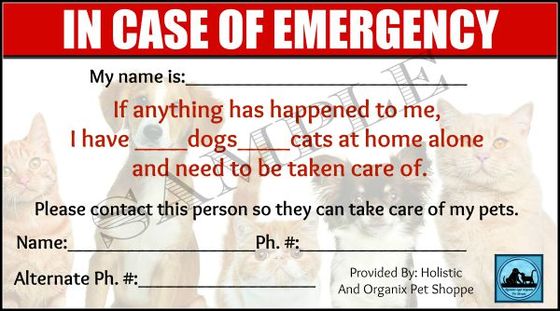
By Dr. Becker
Today I want to discuss a condition in cats known as feline stomatitis.
Stoma is Latin for 'mouth,' and itis means 'inflammation.'
Feline stomatitis is also called by other tongue-twisting medical terms including lymphocytic-plasmacytic stomatitis, feline chronic gingivostomatitis, immune-mediated feline refractory stomatitis, and feline generalized oral inflammatory disease.
All of those names describe exactly the same disease.
To cats, however, the condition, no matter what it's called, means a very painful, serious and chronic oral disease. Feline stomatitis is thought to be autoimmune in nature. The feline immune system seems to overreact to dental plaque around a cat's teeth, triggering inflammation in the tissues of the mouth.
The problem also occurs on the back of the throat at the oral pharynx, and even underlying bone in the mouth can become inflamed or infected. Stomatitis inflammation appears externally in the mouth as angry, red, swollen tissue.
Today I want to discuss a condition in cats known as feline stomatitis.
Stoma is Latin for 'mouth,' and itis means 'inflammation.'
Feline stomatitis is also called by other tongue-twisting medical terms including lymphocytic-plasmacytic stomatitis, feline chronic gingivostomatitis, immune-mediated feline refractory stomatitis, and feline generalized oral inflammatory disease.
All of those names describe exactly the same disease.
To cats, however, the condition, no matter what it's called, means a very painful, serious and chronic oral disease. Feline stomatitis is thought to be autoimmune in nature. The feline immune system seems to overreact to dental plaque around a cat's teeth, triggering inflammation in the tissues of the mouth.
The problem also occurs on the back of the throat at the oral pharynx, and even underlying bone in the mouth can become inflamed or infected. Stomatitis inflammation appears externally in the mouth as angry, red, swollen tissue.
Risk Factors and Symptoms
Stomatitis is often found in cats with diseases of the immune system like the feline immunodeficiency virus (FIV) or feline leukemia virus (FeLV).
Gingivitis or gum disease is often present in kitties with the condition as well.
There might be more of a tendency for certain breeds like the Siamese to develop stomatitis.
There's a juvenile onset form of this disease that occurs in kittens between three and five months of age, as their permanent teeth erupt. By nine months, the condition is really significant.
Stomatitis is often found in cats with diseases of the immune system like the feline immunodeficiency virus (FIV) or feline leukemia virus (FeLV).
Gingivitis or gum disease is often present in kitties with the condition as well.
There might be more of a tendency for certain breeds like the Siamese to develop stomatitis.
There's a juvenile onset form of this disease that occurs in kittens between three and five months of age, as their permanent teeth erupt. By nine months, the condition is really significant.
Needless to say, stomatitis causes severe pain for kitties. If your cat has the condition, you might notice behavior changes including depression, irritability, aggression or reclusiveness.
Excessive drooling is also a common symptom, along with gums that bleed easily.
Because the condition is quite painful, many cats have trouble eating. Some simply give up after trying for several days or weeks because it's just too painful. Often, owners think a kitty is just not as hungry as usual, when in fact, their pet is in overwhelming pain and that's why he's not eating.
Excessive drooling is also a common symptom, along with gums that bleed easily.
Because the condition is quite painful, many cats have trouble eating. Some simply give up after trying for several days or weeks because it's just too painful. Often, owners think a kitty is just not as hungry as usual, when in fact, their pet is in overwhelming pain and that's why he's not eating.
A kitty who is really hungry and runs to her bowl, then is hesitant about putting food in her mouth, is probably suspicious for feline stomatitis.
Dehydration, weight loss and muscle wasting are also seen in cats with the disease because they aren't able to comfortably eat enough calories to maintain their body weight.
Breath that goes from bad to terrible to heinous is another common symptom. So is lack of grooming because the mouth becomes too sore to tolerate licking and other self-cleaning activities.
Many cats with feline stomatitis also paw at their mouths. This is a good indicator the mouth is irritated or inflamed.
Proactively Managing Feline Stomatitis
Feline stomatitis is an excellent example of a condition that can be identified and managed early by being proactive.
As regular readers here know, I advocate at-home wellness exams, which include inspections of your pet's mouth.
Dehydration, weight loss and muscle wasting are also seen in cats with the disease because they aren't able to comfortably eat enough calories to maintain their body weight.
Breath that goes from bad to terrible to heinous is another common symptom. So is lack of grooming because the mouth becomes too sore to tolerate licking and other self-cleaning activities.
Many cats with feline stomatitis also paw at their mouths. This is a good indicator the mouth is irritated or inflamed.
Proactively Managing Feline Stomatitis
Feline stomatitis is an excellent example of a condition that can be identified and managed early by being proactive.
As regular readers here know, I advocate at-home wellness exams, which include inspections of your pet's mouth.
Beginning when your pet is a kitten, I recommend you get familiar with your cat's mouth while simultaneously getting her comfortable having you poke around and peer in there. Desensitizing your pet's mouth to touch early in life will allow you to do regular checks on her oral health throughout her life.
You begin by petting your kitty's face, then touching the lips, opening the mouth, and touching the gums and teeth. Developing this routine when your pet is very young will prevent a kitty meltdown later in life when you need to check the condition of her mouth.
If you aren't able to evaluate your cat's mouth regularly at home, you'll have to rely heavily on your only other option, which is to have your pet seen every six months by your veterinarian.
And a lot of changes can occur in a kitty's mouth over a short six month period, so foregoing an oral exam for a cat who's developing feline stomatitis can make a significant, negative impact on his long-term quality of life.
You begin by petting your kitty's face, then touching the lips, opening the mouth, and touching the gums and teeth. Developing this routine when your pet is very young will prevent a kitty meltdown later in life when you need to check the condition of her mouth.
If you aren't able to evaluate your cat's mouth regularly at home, you'll have to rely heavily on your only other option, which is to have your pet seen every six months by your veterinarian.
And a lot of changes can occur in a kitty's mouth over a short six month period, so foregoing an oral exam for a cat who's developing feline stomatitis can make a significant, negative impact on his long-term quality of life.
Treatment for Feline Stomatitis
This condition starts as gingivitis, which appears as redness at the gum line. Often the entire gum becomes flaming red.
You may not see any plaque or tartar on the teeth, yet the whole gum line is an angry red, especially at the junction of the tooth and gum. Usually there's a ring of inflammation around the whole tooth, and it happens more commonly in the premolars and molars in the back of the mouth.
In juvenile onset stomatitis, which is hopefully when you'll proactively notice the disease, some kitties do respond to intensive medical management. This includes really good oral home care (brushing your cat's teeth), regular professional dental cleanings, and aggressive control of plaque and tartar buildup.
Unfortunately, most cases of feline stomatitis are diagnosed reactively, meaning late in the game. The pet owner will notice the cat has horrible breath or he's not eating well, and a visit to the vet is scheduled.
This condition starts as gingivitis, which appears as redness at the gum line. Often the entire gum becomes flaming red.
You may not see any plaque or tartar on the teeth, yet the whole gum line is an angry red, especially at the junction of the tooth and gum. Usually there's a ring of inflammation around the whole tooth, and it happens more commonly in the premolars and molars in the back of the mouth.
In juvenile onset stomatitis, which is hopefully when you'll proactively notice the disease, some kitties do respond to intensive medical management. This includes really good oral home care (brushing your cat's teeth), regular professional dental cleanings, and aggressive control of plaque and tartar buildup.
Unfortunately, most cases of feline stomatitis are diagnosed reactively, meaning late in the game. The pet owner will notice the cat has horrible breath or he's not eating well, and a visit to the vet is scheduled.
By the time the cat is seen by a veterinarian, the whole mouth is typically swollen and there can be ulcerations on the roof of the mouth, the tongue, lips and/or throat. At this point, there are no consistently successful long-term medical management options available.
Sadly, the kindest option for treatment of advanced feline stomatitis is a full mouth extraction. That means removing all your cat's teeth.
If that sounds pretty aggressive, I'm afraid it is. But this disease process is also very aggressive, and when you have full, degenerative disease occurring in the mouth, without aggressive intervention, many cats will stop eating and begin the dying process.
Many cats with full mouth extractions experience dramatic relief and have a significantly improved quality of life after their teeth – which were the source of all the inflammation, infection and pain -- have been completely removed.
To avoid chronic complications from full mouth extractions, I believe it's very important the procedure be done by an experienced veterinary dentist. X-rays should be taken after extraction to make sure all the tooth roots have been successfully removed.
Think of it as similar to a periodontist preparing a human mouth for dentures. Except, of course, cats do fine without the clumsy cosmetic appliances people are fitted with.
Sadly, the kindest option for treatment of advanced feline stomatitis is a full mouth extraction. That means removing all your cat's teeth.
If that sounds pretty aggressive, I'm afraid it is. But this disease process is also very aggressive, and when you have full, degenerative disease occurring in the mouth, without aggressive intervention, many cats will stop eating and begin the dying process.
Many cats with full mouth extractions experience dramatic relief and have a significantly improved quality of life after their teeth – which were the source of all the inflammation, infection and pain -- have been completely removed.
To avoid chronic complications from full mouth extractions, I believe it's very important the procedure be done by an experienced veterinary dentist. X-rays should be taken after extraction to make sure all the tooth roots have been successfully removed.
Think of it as similar to a periodontist preparing a human mouth for dentures. Except, of course, cats do fine without the clumsy cosmetic appliances people are fitted with.
Is There Really No Other Option?
You may be wondering why there aren't other medical options or medications that can help control this immune-mediated disease to avoid having to extract all a cat's teeth.
Unfortunately, most of the medical management options that have been tried for long-term control of feline stomatitis have not been very successful.
Traditional vets have tried steroids, immunosuppressant drugs, long-term antibiotic therapy, laser therapy and topical anesthetic options – all with relatively unimpressive results. And of course, there are significant side effects with many of these drugs.
The most important thing to remember about a cat with feline stomatitis is she's in a tremendous amount of pain all the time, including during the weeks or months it takes for some of these drugs to kick in.
A kitty in that much pain, for that long, who also isn't eating well, is in serious danger. So while it may seem like a radical move to do a full-mouth extraction, getting rid of those teeth also gets rid of the source of the immune mediated response, the inflammation, the infection, and the pain. In the majority of full-blown cases, it is actually the most humane treatment for feline stomatitis.
You may be wondering why there aren't other medical options or medications that can help control this immune-mediated disease to avoid having to extract all a cat's teeth.
Unfortunately, most of the medical management options that have been tried for long-term control of feline stomatitis have not been very successful.
Traditional vets have tried steroids, immunosuppressant drugs, long-term antibiotic therapy, laser therapy and topical anesthetic options – all with relatively unimpressive results. And of course, there are significant side effects with many of these drugs.
The most important thing to remember about a cat with feline stomatitis is she's in a tremendous amount of pain all the time, including during the weeks or months it takes for some of these drugs to kick in.
A kitty in that much pain, for that long, who also isn't eating well, is in serious danger. So while it may seem like a radical move to do a full-mouth extraction, getting rid of those teeth also gets rid of the source of the immune mediated response, the inflammation, the infection, and the pain. In the majority of full-blown cases, it is actually the most humane treatment for feline stomatitis.
Cat's Teeth
In my practice I do have proactive owners who identify subtle changes in their cats' mouths early on.
In these cases, I've had some pretty good success treating mild to moderate feline stomatitis non-surgically by using a multimodal approach.
First we address the diet. Although food allergies haven't been definitively linked to feline stomatitis, I consistently see improvement in inflammation when we eliminate all potential sources of allergens from a cat's diet.
This means the kitty must be transitioned away from foods he's been eating. In most cases, this involves eliminating poultry and seafood from the diet.
We also discontinue all foods that are biologically unnecessary for cats, including foods containing potato, rice, wheat, corn – all carbs and starches. Feeding an anti-inflammatory diet often helps to naturally control the amount of inflammation occurring in the kitty's mouth.
In my practice I do have proactive owners who identify subtle changes in their cats' mouths early on.
In these cases, I've had some pretty good success treating mild to moderate feline stomatitis non-surgically by using a multimodal approach.
First we address the diet. Although food allergies haven't been definitively linked to feline stomatitis, I consistently see improvement in inflammation when we eliminate all potential sources of allergens from a cat's diet.
This means the kitty must be transitioned away from foods he's been eating. In most cases, this involves eliminating poultry and seafood from the diet.
We also discontinue all foods that are biologically unnecessary for cats, including foods containing potato, rice, wheat, corn – all carbs and starches. Feeding an anti-inflammatory diet often helps to naturally control the amount of inflammation occurring in the kitty's mouth.
Next we begin an at-home oral disinfecting protocol. If a kitty has a significant amount of plaque or tartar build up, I perform a deep cleaning under anesthesia to remove all the infection along the gum line.
Thirdly, I prescribe natural anti-inflammatories. I use an esterified fatty acid complex for periodontal health. I also use plant-derived sterols and sterolins, as well as proteolytic enzymes. All these natural agents help control the systemic mediators of inflammation.
The fourth step is use of a variety of nutraceuticals to improve gum health. These include Ubiquinol (a reduced form of CoQ10). I also use a product from Standard Process called Biodent, as well as some great probiotics.
Fifth, I recommend that the pet owner focus on removing environmental sources of toxins that can negatively impact a kitty's immune system. We stop vaccinating and also consider vaccine detoxification. We evaluate air, water and food quality as well as household chemical use.
With early intervention and an aggressive integrative protocol, cats with mild to moderate feline stomatitis have a chance of reclaiming their health without aggressive dental surgery.
Thirdly, I prescribe natural anti-inflammatories. I use an esterified fatty acid complex for periodontal health. I also use plant-derived sterols and sterolins, as well as proteolytic enzymes. All these natural agents help control the systemic mediators of inflammation.
The fourth step is use of a variety of nutraceuticals to improve gum health. These include Ubiquinol (a reduced form of CoQ10). I also use a product from Standard Process called Biodent, as well as some great probiotics.
Fifth, I recommend that the pet owner focus on removing environmental sources of toxins that can negatively impact a kitty's immune system. We stop vaccinating and also consider vaccine detoxification. We evaluate air, water and food quality as well as household chemical use.
With early intervention and an aggressive integrative protocol, cats with mild to moderate feline stomatitis have a chance of reclaiming their health without aggressive dental surgery.




















